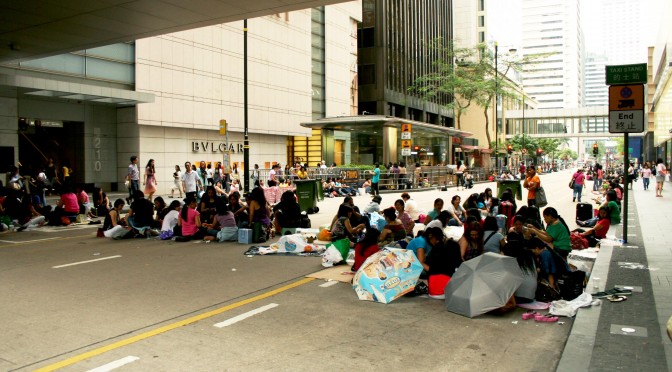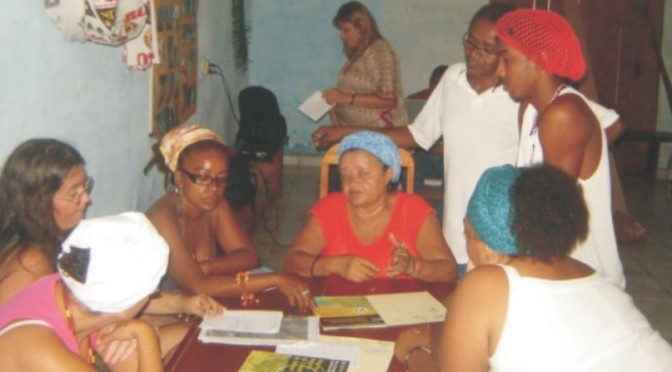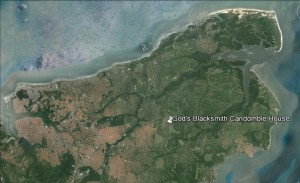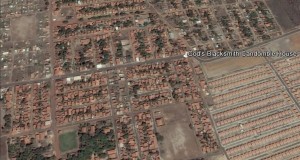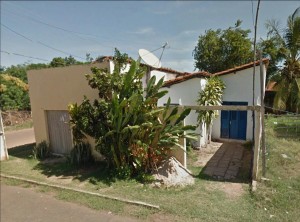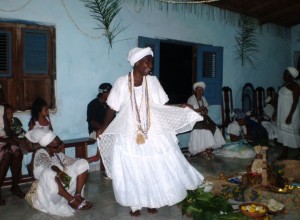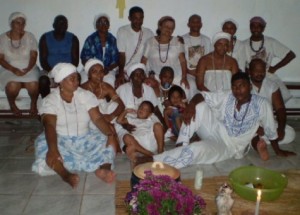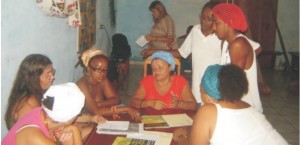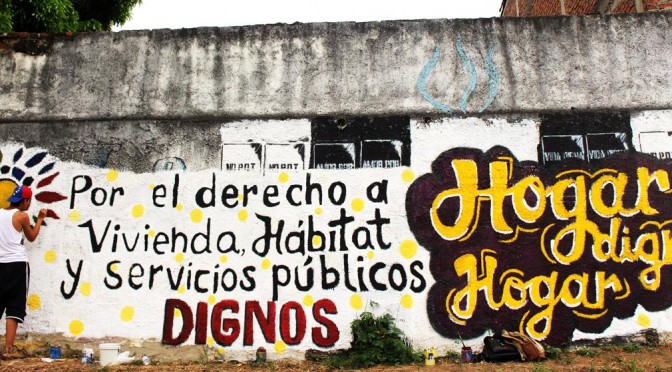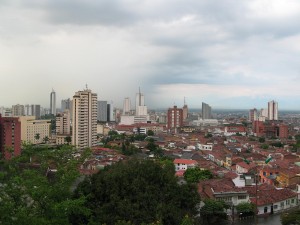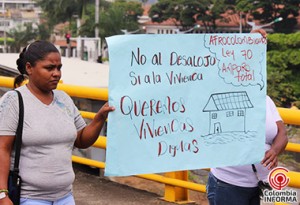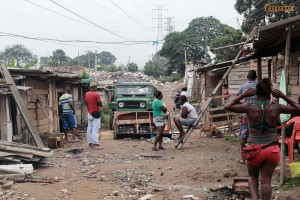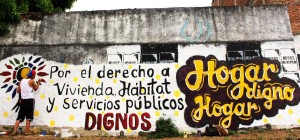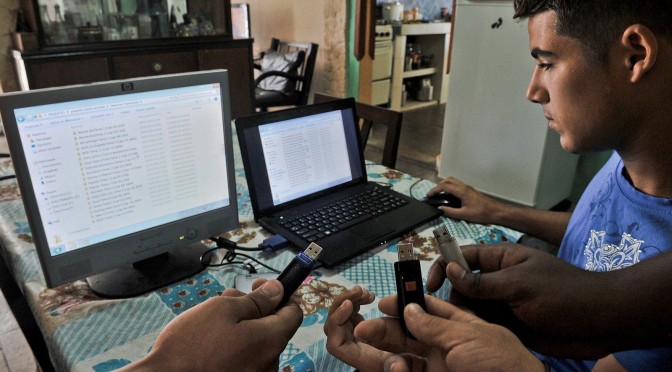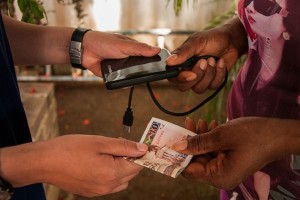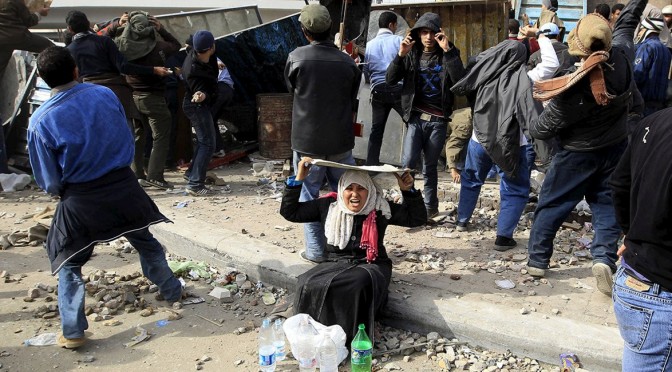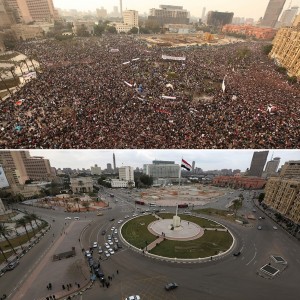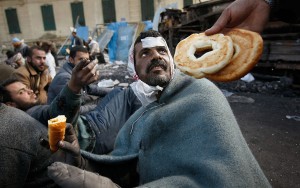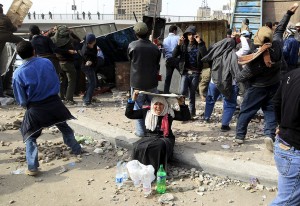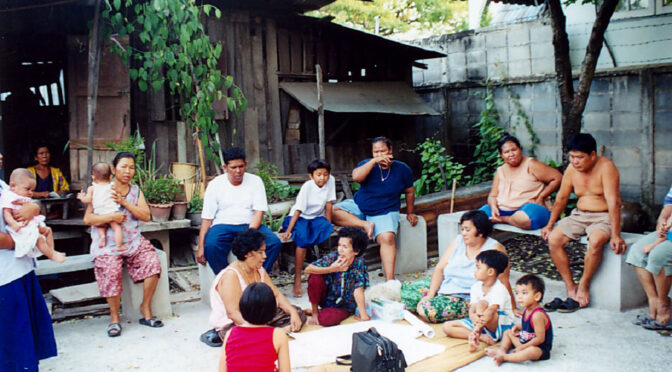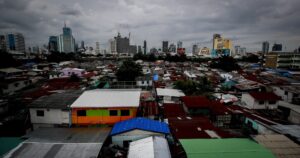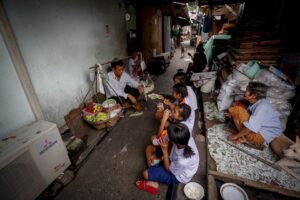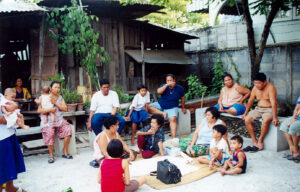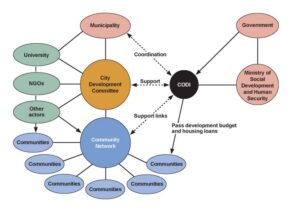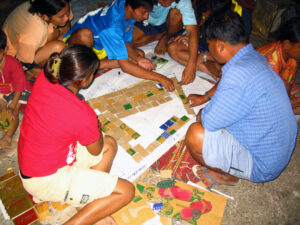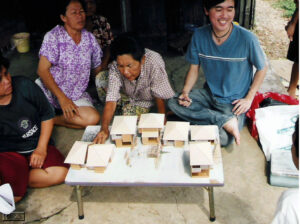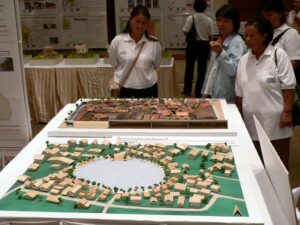By Stephen Zigmund
Introduction
There are roughly 336,000 migrant domestic workers (MDWs) in Hong Kong, the majority of whom are Filipina (Justice Centre of Hong Kong, 2016). MDWs are required to live with their employers, creating a system highly vulnerable to abuse. It also means that to get away from work they must also leave their homes, a privilege not often granted by employers (Constable 1997). However, domestic workers are given Sundays off and the result is an incredible takeover of Hong Kong’s central commercial district. Plazas, sidewalks, markets, stairwells, pedestrian overpasses become spaces for social interaction, correspondence, relaxation, and “private” time.
As Law (2001) notes, Filipina domestic workers have been gathering since the early 1980s, and this conversion of public space into “Little Manila” is now simply “part of the spectacle of modern life in Hong Kong” (Law, 2001, p. 266). In most large cities, one is simply not accustomed to seeing central commercial districts used in this manner, except during organized events, parades, or festivals. What makes this different is the type of activities performed. In addition to typical public activities of sitting, standing, eating, talking, buying and selling, these gatherings also include activities typically conducted indoors and in private, such as manicures, haircuts, and makeovers, or simply watching television (Law, 2001).
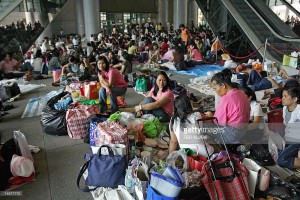
This use of space cannot be considered in isolation from the space of employment that conditions its possibility. We must then follow the insight of Henri Lefebvre that “the space of a (social) order is hidden in the order of space” (1974, p. 289) to better understand how the creative, vibrant space of “situated resistances” (Law, 2001, p. 280) also conceals a relation based on discipline, control, and exploitation (Constable, 1997).
Analysis
Because these activities are conducted in public they are considered by native Chinese to be an intentional flaunting of feminine sexuality, something women employers go to great lengths to suppress in their domestic workers (Constable, 1997). That this takeover of space also often occurs in the plazas of the skyscrapers of global banking giants serves to underscores its insurgent character (Hou, 2010).
On the one hand, this is a fascinating example of a collective practice that makes creative use of spaces which are not designed for assembly, thus constituting a “tactic” deployed to resist dominant planning strategies (de Certeau 1984). On the other hand, this practice makes visible in dramatic fashion a commodification of the domestic sphere through a “feminization of wage labor” (Parreñas, 2000, p. 561). The Sunday space of central Hong Kong then is a place of contradiction, highlighting intersections of gender, culture, sexuality, class, and the international division of labor.

This phenomenon must be understood as occurring under specific historical and economic conditions. In the case of the Philippines, the export of labor was explicitly considered an economic development strategy by former President Ferdinand Marcos. This strategy became formalized in the Labor Code of 1974, promoting overseas contract work which was seen as have double-sided benefits of lowering unemployment while providing a significant stream of income via workers’ remittances (De Guzman, 2003). The Philippines is now the world’s largest exporter of labor (Wee & Sim, 2003) with well over seven million documented Filipinos employed as overseas foreign workers and responsible for remittances totaling $7 billion (De Guzman 2003). Women account for nearly three-quarters of the land-based workforce, almost all of whom work as domestic helpers and entertainers in Singapore, Hong Kong, Malaysia, Thailand, and the Middle East (Wee & Sim, 2003).
The largest single importer of Filipina MDWs is Hong Kong. Because they are employed on a short-term contract basis and required to live with their employer, MDWs are extremely vulnerable to physical, emotional, and sexual abuse (De Guzman, 2003). A recent report found that MDWs in Hong Kong regularly work 70 hour weeks without a day off and therefore should be considered a form of forced labor (Justice Centre of Hong Kong, 2016).
These conditions of course do not occur in a vacuum. The fact that a third of all households with children employ MDWs is symptomatic of deeper changes in the labor structure of Hong Kong and global capitalism more generally. Vernengo (2006) notes that the new international division of labor is characterized by an increasing financialization of the global economy that has placed commodity-producing nations in a position of credit and terms of trade dependency to US, European, and Chinese commercial and national banks, resulting in a spatial clustering of large corporations in regional and global finance centers. As one of these global financial centers, Hong Kong has benefited dramatically from these developments and is now one of the wealthiest cities in the world in terms of per capita GDP.
The economic restructuring in Hong Kong, in turn, has led female citizens to become more integrated into the service-dominated workforce in a process referred to as feminization of the workforce (De Guzman, 2003; Parreñas, 2000). Without child and dependent care programs to compensate for this integration of women into the workforce, workers are now needed to complete reproductive labor in the household. Wee and Sim note that “migrant workers who are domestic helpers are hired not so much to do housework, but to care for the young, the old and the disabled in the developed economies of the receiving countries” (Wee & Sim, 2003, p. 3). Parreñas calls this phenomenon “international transfer of caretaking” (Parreñas, 2000, p. 561).
Implications
While it can be argued that these gatherings of domestic workers in Hong Kong are a sign of empowerment, they can also be understood as a symptom of “the prevailing gender division of labor, as well as the existing dichotomization of state and family responsibilities, respectively, for formal economic production and informal social reproduction” (Wee & Sim, 2003, p. 3). That is to say, the demand for labor by Hong Kong’s growing service sector and the high cost of living in global financial center combine to create the conditions where both adults in a household must work. This initiates a commodification chain of reproductive labor whereby women entering the workforce in Hong Kong purchase the low-wage labor of Filipina domestic workers (and others from SE Asia) who, in turn, themselves purchase the even lower-wage labor of poorer women left behind in the Philippines (Parreñas, 2000). In this way, class relationships are introduced among female workers via the international transfer of caretaking, reinforcing and expanding the existing gender and racial divisions of labor (Parreñas, 2000).
While the takeover of public space in central Hong Kong could be understood as an insurgent tactic, the weekly emergence of “Little Manila” also make visible the dramatic social and spatial impacts of the economic restructurings of both the global market and labor forces. That the temporary spaces of migrant domestic workers often occupy the very property of the global finance giants that have encouraged and benefited from these restructurings should provide an important lesson to radical planners: the actual uses of public space should only be a starting point for deeper inquiries into the social functions of urban life, including the political-economic structures which drive the spatial tactics of the most vulnerable participants in the global economy.
